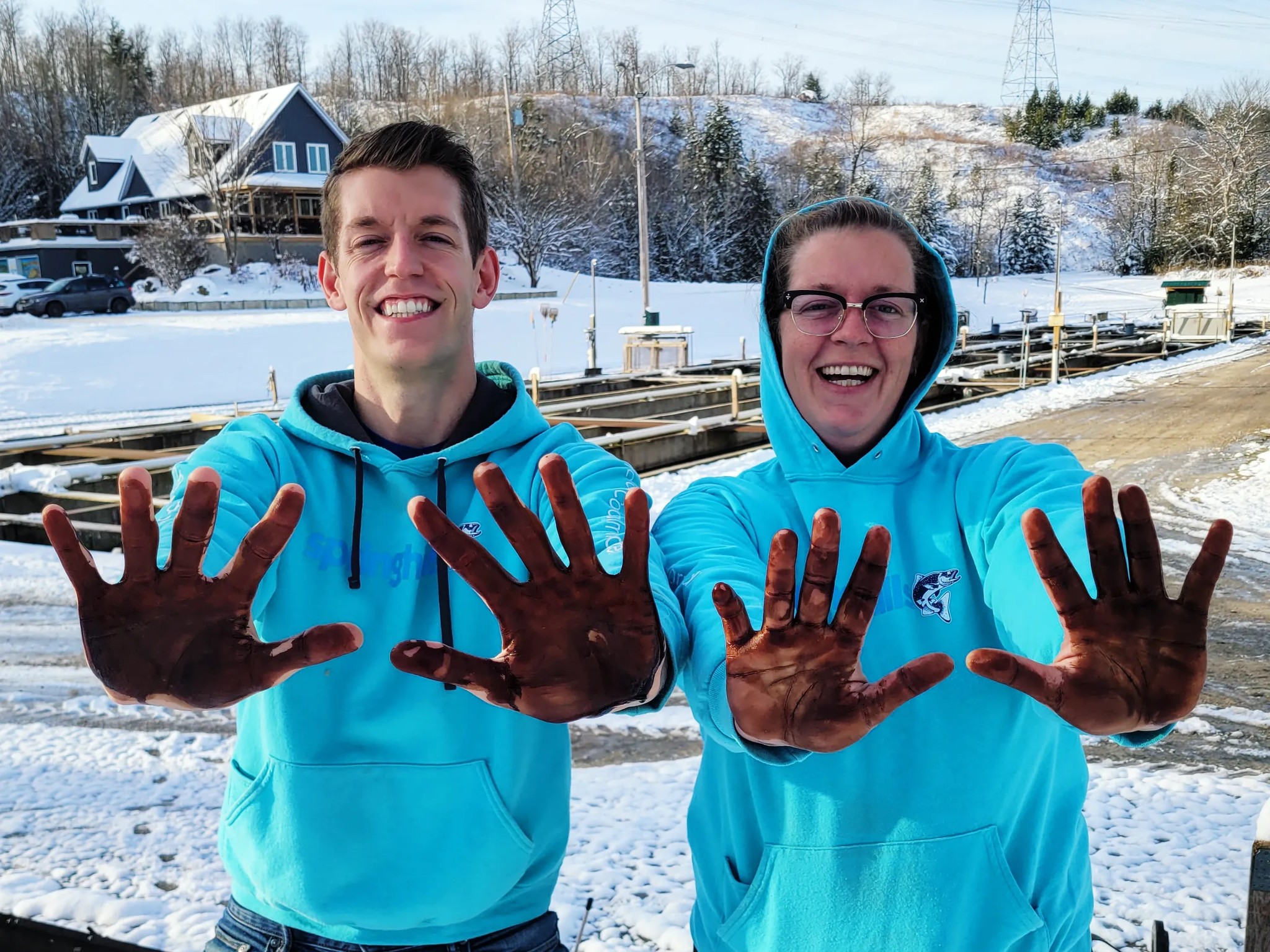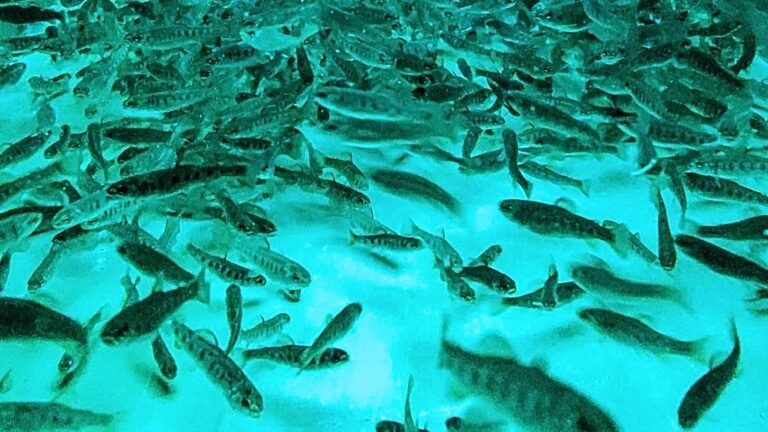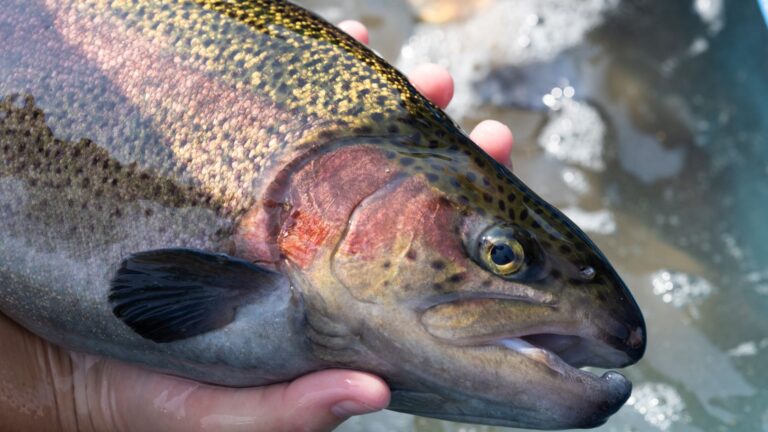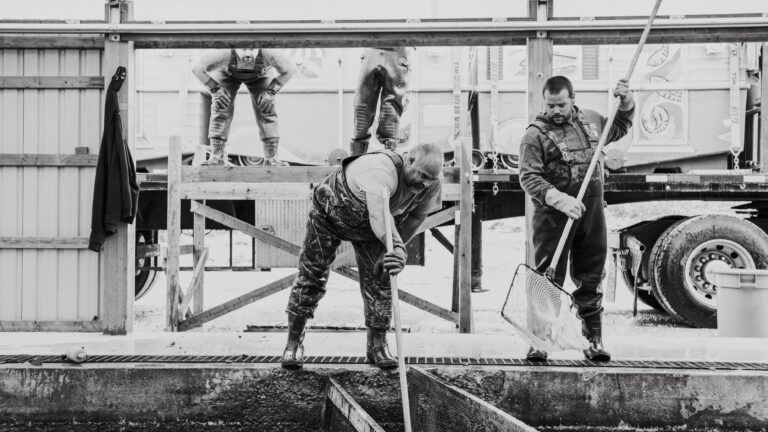
Peat moss for dinner? How we use a natural byproduct to keep fish healthy at Springhills
When people hear “peat moss,” they usually think of gardening soil. But on our farm, peat has a very different purpose. It is part of how we keep our trout, salmon and Arctic char healthy and thriving.
And no, we are not sprinkling potting mix into the feed. What we use comes from deeper layers of peat, a carbon-rich byproduct that is usually discarded as waste. By turning it into a resource, we are able to keep our fish strong, our water clean, and our farm more sustainable.
What exactly is it?
Peat forms over thousands of years as plants partially decompose in wetland environments. The fluffy top layer is what gardeners use. The lower layers are dense, carbon-packed material that is too coarse for gardening. That is the part we use, with a little help from our friends at local family business MTS Environmental, who process it into a farm-friendly product.
Instead of being left behind as waste, this material gets a second life on our farm.
How It Works in Water
Every day, we drip a liquid form of peat extract into our tanks and pens. Carbon compounds in the peat act like magnets, binding up stray particles in the water such as bacteria, organic matter, and fish waste. Once clumped, these heavier particles sink to the bottom where we can scoop them out during daily cleaning.
The result is cleaner, healthier water for our fish to grow in.
How It Works in Feed
We also mix small amounts into the fish feed. Inside the fish, the carbon compounds play a role in supporting gut health and strengthening the microbiome, the community of good bacteria that helps digest food and fight off disease.
It is not just fish that benefit. Farmers raising chickens and pigs have been using similar peat-based supplements for years to improve digestion and reduce the need for medications.
An Ancient Practice Rediscovered
Modern science is helping us understand the benefits, but the idea is not new. In Ayurveda, traditional Indian medicine, a peat-like substance called shilajit has been used for more than 3,000 years. Rich in carbon-based nutrients, it has long been valued for antioxidant, anti-inflammatory and immune-boosting properties.
It shows how old wisdom and new science can meet in surprising ways.
The Smell Test
Using peat moss comes with its quirks. The smell sparks endless debate on our farm. Some say it is like black licorice. Others swear it is closer to amaretto liqueur, Christmas baking, or figs.
“I love when we get to the carbon mixture on farm tours and let people smell it. Everyone has a different idea of what it smells like, and it always sparks a laugh. For me, it is a perfect example of how we can work with nature to raise fish sustainably instead of fighting against it.” — RJ Taylor, Springhills Fish
Why It Matters
For us, this is about more than just peat moss. It is one more way we choose natural and innovative solutions instead of relying on chemicals or medications. By using a local byproduct, we are cutting down on waste while boosting the health of our fish and the quality of the water they live in.
Healthy fish means better food on your plate and a healthier ecosystem around our farm.
Thanks to Local Innovation
We are grateful to work with MTS Environmental, a local family business that has helped bring peat power into aquaculture. Partnerships like this let us farm smarter, cleaner, and more sustainably right here in Ontario.
Final Thought
Peat moss might not be on your dinner plate, but it is helping our fish stay strong, tasty, and naturally healthy. And that is a win for everyone. 🌱🐟


